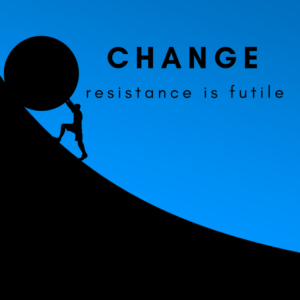Mary E. Marshall's Blog, page 18
November 14, 2018
Good Leaders Ask the Questions Others Won’t
 One of my favorite questions to ask leaders when they are unhappy with someone’s performance is “knowing what you know now, would you hire them today?” Usually, the answer is an immediate “no.” Then the harder, follow up question is “so what are you going to do now?” Although it seems like a no-brainer that if you would not hire them, you should release them, it’s never that easy.
One of my favorite questions to ask leaders when they are unhappy with someone’s performance is “knowing what you know now, would you hire them today?” Usually, the answer is an immediate “no.” Then the harder, follow up question is “so what are you going to do now?” Although it seems like a no-brainer that if you would not hire them, you should release them, it’s never that easy.
The most common reason I hear for not wanting to let them go is what I’ve heard called the “sunk cost fallacy” which translates to comments like, “they’ve been employed so long and so much has been invested in them,” or “we know how to work around them,” or “they have good days, etc.” Essentially, the belief is that with a little more time, they will magically morph into that employee you wish you had hired to begin with. Here’s the reality – they will never turn into that butterfly. They are who they are and the only thing that will help the situation is the leader seeing it for what it is and the employee for who they are. Time is not something that will help the situation, one more dollar in the slot will not get you closer to the jackpot.
This is one of the hardest things for leaders to deal with. Even those who are brilliant at strategy, execution, leadership or who have any of a number of other talents have difficulty believing that their investment is not going to pay off. I can tell you from a lot of experience that It won’t. Cut the cord. It might seem heartless but it’s an expensive proposition not to and you are depriving that employee of finding the right spot where they can be successful.
As a leader, you must ask the questions – the questions that uncover the real issues and lead to critical decisions. If you don’t, you end up making decisions based on misinformation. Decisions made with inaccurate information lead to bad outcomes, some of which can be catastrophic. One of the reasons leaders don’t ask the hard questions is they don’t want the answer said out loud. Sometimes they know it’s bad but want to pretend it’s not. This is the “head in the sand strategy” that usually just gets you a face full of sand and your rear exposed. Neither is an appetizing proposition.
Of course, once you’ve asked the questions, got the answers you didn’t expect or didn’t want, now you must act. Not acting on the information is worse than not having the information. It is viewed as a sign of weakness by the team. Good leaders make the hard decisions but first, they must ask the hard questions.
The post Good Leaders Ask the Questions Others Won’t appeared first on Mary Marshall // CEO Coach.
November 7, 2018
Leaders Know Their Customer Lifetime Value
 There was a great article in the Wall Street Journal this week reinforcing one of the concepts we teach in the SBA’s Emerging Leaders Course – Customer Lifetime Value. It’s always interesting to me that most small to mid-size companies don’t know what a customer is worth to them. As the article points out, service is often dependent upon how much the customer is worth to the business.
There was a great article in the Wall Street Journal this week reinforcing one of the concepts we teach in the SBA’s Emerging Leaders Course – Customer Lifetime Value. It’s always interesting to me that most small to mid-size companies don’t know what a customer is worth to them. As the article points out, service is often dependent upon how much the customer is worth to the business.
The calculation is relatively simple, take a look at your customers and figure out what your average sale to them is. Next, figure out how many times per year that same customer might buy. Then calculate how many years you might have a customer. Let’s say that your average sale is $1,000 and a customer might buy 3 times per year and you usually keep a customer for 5 years – $1,000 x 3 x 5 = $15,000. In this example, the lifetime value of this customer is $15,000. For some businesses in the Emerging Leaders course, the lifetime value was well past $250K. What would you be willing to do for that customer versus the one-time customer for $1,000 that argues with you on price?
Another side benefit of doing this exercise is that you will identify who those good customers are and are not. You may realize you need to cut back on your marketing efforts to those customers who only buy once or have no potential of becoming lifetime customers. Some companies can completely refocus their marketing activities to go after that potential long-term customer more successfully.
As the article points out, resources are spent on those long-term, high-value customers vs. those who are not. They give preferred clients “special treatment” vs. those who do not have potential. Now I know why I’m on hold so long with some companies!! Once you’ve done the calculations, what would you be willing to spend on these customers? How much more service would you be willing to give to them to keep them? Probably quite a bit.
As a leader, it’s important for you to be asking the questions, to continue to evaluate who your customers are and how you should be treating them. Yes, you should treat all customers with dignity, respect, and fairness, but what else are you willing to do to get those customers into the sweet spot of long-term customers that maximize their lifetime value to you?
Good companies have programs to reward and encourage maximum customer lifetime value. Make sure you know what yours is.
The post Leaders Know Their Customer Lifetime Value appeared first on Mary Marshall // CEO Coach.
November 1, 2018
The Fear and Excitement of Being an Entrepreneur
 Recently, I saw a parent teaching a child how to ride a bike.It made me smile to see both the excitement and fear on the little boy’s face as he said “now don’t let go ‘til I tell you,” and then the joy when he realized he was riding all by himself.
Recently, I saw a parent teaching a child how to ride a bike.It made me smile to see both the excitement and fear on the little boy’s face as he said “now don’t let go ‘til I tell you,” and then the joy when he realized he was riding all by himself.
Entrepreneurs face that fear and excitement constantly in the early days of a business. And much like a child who will only learn how to ride a bike, by riding a bike, running a business is the same. The issue is we get jaded and become more cautious and won’t take the risks we did as kids. Kids have that wonderful mindset that isn’t cluttered up with “what is,” like most of us adults. They live in wonder about “what could be.” They see a bike, see others riding bikes, and figure how hard can it really be? It’s muscle memory once you get the hang of it, but it’s a leap of faith on that first ride because you’ve never experienced it before.
If more entrepreneurs looked at their business challenges and opportunities as new adventures, (a new bike ride), instead of something scary or dangerous, or less comfortable than where they are now, more innovation would happen. More risks would be taken, more would be won than lost, and more confidence would be built into the business – more muscle memory, if you will.
The minute we start playing it safe, we backslide. The business exists, growth is at single digits, and we’re okay with the status quo because we “know” what could happen if we risk anything. The real risk is to not risk trying. We need to “think like a kid” who hops on that bike not knowing. Sure he might get a banged up knee or two, but it’s unlikely that he’ll die. Same goes for a business – what if we didn’t “know” what would happen, what might happen instead?
If Jeff Bezos had not started selling books online and amassing one of the most valuable databases and distributions systems in the world, what would online retailing look like now? If he had listened to everyone around him, he would never have gotten on the bike, but he did and look at the results.
Look around your business and see what you need to do or try because what you “know” is probably incorrect. It might have been true at one point, but it’s now become a ball and chain against innovation. Just pick one thing that you’ve been afraid to try or to implement and pretend you’re learning to ride that bike again – just have someone hold the seat until you’re ready to ride! You’ll be glad you did.
photo credit: Look dad, no training wheels via photopin
The post The Fear and Excitement of Being an Entrepreneur appeared first on Mary Marshall // CEO Coach.
October 24, 2018
Are You Suffering from Organizational Laziness?
 Sometimes organizations get lazy. This happens when they have long periods of success and start to take it for granted. They assume that the customers and money will just keep coming in and they stop doing the things that got them to that point in the first place.
Sometimes organizations get lazy. This happens when they have long periods of success and start to take it for granted. They assume that the customers and money will just keep coming in and they stop doing the things that got them to that point in the first place.
How does this show-up? It shows up in the most basic of ways. Not bothering to have an annual goal or strategic planning is usually the first step towards decline. If you don’t plan, things have a way of taking over that you never intended. Threats and weaknesses become more pronounced and opportunities and strengths go unnoticed. This becomes possible because the organization is financially sound so there is no real impetus to do anything differently.
The next way this shows up is in the “culture” or values no longer being emphasized and reinforced. This leads to an unintentional culture that doesn’t look at all like the organization first intended. This stems from a leader who is out of touch with what’s going and has no real understanding of what the employees are thinking or doing, let alone what the customers are saying. The values being lived change almost overnight when this happens. The challenge is that it takes longer to show up as a problem in sales and retention or recruitment of good employees.
Eventually, of course, it does show up in flat or declining sales revenue. This, in turn, leads to a loss of net revenue. At which point the leadership usually gets involved, most often in panic mode, and everyone starts wondering if the sky is falling. It’s not, but there is a serious crack in the foundational culture of the organization because collectively everyone has become lazy.
Profit hides a multitude of sins inside an organizationally lazy company. Lack of planning, lack of reinforcement of values through organizational structures, no employee development training programs, no reward programs and lack of leadership to even ask the questions. When the money is flowing in, no one looks too closely at the basics because money fixes, but also hides, a lot of problems.
It’s only when the money starts drying up that questions start to be asked, sometimes too late. In order to avoid this scenario, the first step is to have sound, basic business structures in place. Annual planning, goal setting, and reinforcement of the values and culture of the organization. These will be the early warning signs of shifts in the market, shifts internally or things that need tending, while the money is still flowing. The better the revenue and profits, the longer the company can go without looking at the roots.
Don’t wait until there is a crisis to do a health check on your organization. Have you become a little too “lazy” in some areas? No time like the present to get things back on track so that when a downturn or drop in revenues does come, (and it always does), you will be ready to weather the storm.
The post Are You Suffering from Organizational Laziness? appeared first on Mary Marshall // CEO Coach.
October 16, 2018
Change – Resistance is Futile
 At its core, most of the work I do is about change – why it has to happen, how to move through it, how to lead it and most importantly, how do we come out the other side better than we were before. Humans are wired to protect what they have, what they are doing and who they are. When that is threatened because of outside forces, they hang on even tighter, making change all the harder. It is no different in organizations. Why do we need to change when it’s working perfectly well? This is an all too common refrain and we are going to unpack it here.
At its core, most of the work I do is about change – why it has to happen, how to move through it, how to lead it and most importantly, how do we come out the other side better than we were before. Humans are wired to protect what they have, what they are doing and who they are. When that is threatened because of outside forces, they hang on even tighter, making change all the harder. It is no different in organizations. Why do we need to change when it’s working perfectly well? This is an all too common refrain and we are going to unpack it here.
First, what works for today may not work for tomorrow because nothing stays the same, no matter how hard we will it to be so. If you think about it, it’s the only constant in business and life – change. Visionaries see the future differently than most of us and get excited about that picture and drive change as a result of it. If they are not able to clearly paint that picture for others, they will attempt to drag everyone along, and the kicking and screaming will be relentless. Leaders need to help others see their vision so we can join them willingly.
Leaders who embrace change are able to make transitions so much easier. Leaders who become part of the resistance, create discord and fear in their teams. If we look at the Change Curve (see below) – which has four phases to it – everything starts out at the beginning with a bright vision of the future, clearly articulated and the benefits outlined. In stage 2, the “fall” happens, and change starts to be implemented, discord happens, resistance happens, cliques are formed, leaders are targeted, and people start to become as stubborn as donkeys. They want to protect what was, even if it wasn’t that great, it was “known.” To most people, the known is better than the unknown every day of the week.

In stage three, some will “see the light” and realize that the change actually might be better than “what is” and move forward and finally, they get out of the trough and are through to the other side of the “change canyon” as I call it. The key to getting through the canyon is clearly articulating the benefits of the change, why the change and what’s in it for them. And telling them that it will get worse before it gets better – warn them that they will get mired down in details, there will be fighting and resistance and that depending upon the scope of the change – how long it might take. Not only do they need to know what the end looks like but what to expect along the change road. Engage some of the biggest resistors to help lead the charge and it will be much easier! A leader cannot do it alone, it does take the team to navigate the chasm successfully.
Those who resist change for too long will be gone or obsolete. Those who hang on to the way it was will be passed over. Those who take the lessons from the past to create a future that is better than the present will lead teams to success all day long and the resistance will subside.
The post Change – Resistance is Futile appeared first on Mary Marshall // CEO Coach.
October 10, 2018
The Great Culture [Dis]Connect
 It’s almost here! I am very pleased to announce that my new book will be arriving at the end of the month – The Great Culture [Dis]Connect. After many years of working and observing organizations whose culture’s “work” and those that don’t, I’ve put together a practical guide for how to build a business culture that works.
It’s almost here! I am very pleased to announce that my new book will be arriving at the end of the month – The Great Culture [Dis]Connect. After many years of working and observing organizations whose culture’s “work” and those that don’t, I’ve put together a practical guide for how to build a business culture that works.
Last spring, I was approached by the publisher to put a talk I’ve been doing called “Intentional Culture” into a book. It has been a privilege for me to put into writing what I have been talking about for years. Culture in a business can be the reason for success or failure and yet it is one of the least understood metrics in a business. Companies that succeed have cultures that work. Companies that don’t have cultures that are chaotic, dysfunctional and toxic. In today’s’ hyper-competitive environment for talent, culture matters.
In the book, I use both positive and negative examples of culture and the results of each. For anyone who has heard my talk, you know I believe it all starts with values. Defining and stating unequivocally what you stand for, who you are, and what the foundation of your business is built on. This can be a difficult exercise for most businesses as they are often afraid of declaring values for fear of offending someone or they just plain don’t know how to do it.
Once the values are established, the rest is pretty simple, but not necessarily easy. Putting in place systems and processes that allow a company to live the values of an intentional culture on a daily basis takes thoughtful planning, collaboration and rigorous adherence to the values. Once a leader or organization fails to hold a value by letting someone or something go, “just this once,” it leads to an unintentional culture much faster than most people realize. Hiring a cultural misfit can lead to chaos because misfits don’t like to be unhappy alone and recruit others to join them and before long, you have cultural terrorists running amok in your organization. The Great Culture [Dis]Connect discusses all of this and shows you how to hire right in the first place and “live” the values of the organization on a daily basis.
In addition to the book coming out at the end of October 2018, look for our new podcast “Culture Connection” to begin in late November with interviews of CEOs and leaders of organizations whose cultures work and learn how they did it.
We’ll keep you posted as we get closer to the release date of The Great Culture [Dis]Connect but you can pre-order now by clicking here.
The post The Great Culture [Dis]Connect appeared first on Mary Marshall // CEO Coach.
October 4, 2018
Hire for Character and Train Skills
 “Hire Character. Train Skill.”
– Peter Schutz
“Hire Character. Train Skill.”
– Peter Schutz
In this hyper-competitive environment where employers are battling for talent, the desire to shortcut the process and make an offer to someone is intense. However, hiring a cultural misfit will end up costing you so much time and money, not to mention aggravation, it’s rarely worth it.
Peter Schutz says hire for character. I call it hiring for values, but it’s essentially the same thing. Most companies have identified their values but rarely actually use them in the hiring process. Hiring is exactly the time to put them to good use and to really embed them in your company culture.
The first step is to make sure your hiring manager or managers know what the values are and hopefully, they embrace them. If they don’t, you need to sort that out first because hiring more people who have opposing values or simply don’t share the values of the company is a problem. Next, create 4-7 values-based behavioral questions and use them in every interview, multiple times. A person can generally make something up once, repeating the same exact lie is difficult so it’s easy to spot when someone is not truthful.
It’s important to be clear that this is not the same as screening for introverts, strengths or other personality characteristics, this is questioning for values. Here are a few examples of what I’m talking about (more available in my book, chapter 4 on Hiring):
Teamwork – Describe a situation where others who you were working with on a project disagreed with your ideas. What did you do?
Tenacity/Resilience – Tell me about a particular work-related setback you have faced – how did you deal with it?
Creativity – Tell me about a time when you solved a problem in a unique or unusual way? What was the outcome? How did you feel about it?
Integrity/Honesty – Tell me about a time when your integrity was challenged, how did you handle it?
Adaptability – Tell me about a situation in which you have had to adjust to changes over which you had no control, how did you handle it?
First, you will get an idea of what their definition of the value is and second you will get an understanding of whether they “fit” your organizational culture or not.
Values and character are at the heart of an employee “fitting” into an organization. Assuming they come with the basic understanding, training or pre-requisites for the job, you can teach them any skills they may lack. Values, on the other hand, are hard-wired. Someone either believes a certain way, or they don’t. You can’t change them and you will end up letting them go because they don’t fit if you don’t screen up front.
photo credit: Bestpicko Business Shaking hands via photopin (license)
The post Hire for Character and Train Skills appeared first on Mary Marshall // CEO Coach.
September 26, 2018
Good Leaders Know How to Give Feedback
 A recent piece in the Wall Street Journal discussed the rare worker that thrives on negative feedback. The author makes the point that leaders often shy away from giving this feedback, but in fact, it can be motivating for the person receiving it. I’ll agree with this point however, I also believe the reason so many people can’t hear it or don’t respond well to negative feedback is because of how it’s delivered.
A recent piece in the Wall Street Journal discussed the rare worker that thrives on negative feedback. The author makes the point that leaders often shy away from giving this feedback, but in fact, it can be motivating for the person receiving it. I’ll agree with this point however, I also believe the reason so many people can’t hear it or don’t respond well to negative feedback is because of how it’s delivered.
In a performance review, my experience has been that we all listen for the bad, or weaknesses and pay more attention to them than we do the good. This is human nature, what’s wrong, what can I fix, etc. We give this more weight than what we are doing well, even if it’s just 10% of our overall feedback. We often give it outsized importance and weight, in some cases completely ignoring the 90% of good feedback.
Coupled with leaders and managers inability to deliver well, one can’t truly fix a weakness. We can mitigate it, but it can’t be fixed. If you look at all the research from Gallup around the tool Strengthsfinders, you will see that they have shown no one can operate from an area of weakness, only from an area of strength. Most of the examples cited in the article were not actual weaknesses, but merely behaviors that needed to be changed. Those are not weaknesses, it’s about something that needs to be executed differently. By naming it as a weakness we have already labeled it as bad and lessened the likelihood that it can be changed. By simply naming a behavior that can be changed to achieve a better outcome, you have a much higher likelihood of achieving the desired outcome.
As a leader, start by naming the outcome that you would like to have, meaning the change you would like to see. Identify any institutional barriers that are in the way of achieving it. Then look at the behaviors that have contributed to not achieving that outcome – talking to the wrong client; not communicating effectively; not working on the right projects; not delivering in a timely manner, etc. You get the idea. Once you have a desired future state defined, that is different than where you are today, you can identify the roadblocks that are in the way. What does this person need to do differently? It’s not bad or good, it’s simply is or is not getting them the result needed to be successful.
Next, it’s important to separate the behavior from the person. It’s not attached to them like a barnacle, it’s likely a behavior that if made aware of it, they can change. When a person is self-aware, they likely self-correct frequently along their career path. Always learning from both successes and failures and adjusting accordingly. Name it for what it is and move on. The behavior doesn’t define them unless they are unwilling to change and learn something new.
Lastly, provide coaching or training for the new behavior as needed. When was the last time you learned something new on your own, without help or by accident? Not very often. Good leaders know to provide support for people to change behaviors. It’s not about pointing out someone’s weakness or always asking about our own, it’s about connecting the dots to the future state we want and getting some help along the way.
The post Good Leaders Know How to Give Feedback appeared first on Mary Marshall // CEO Coach.
September 19, 2018
Leadership: Trust but Verify
 When coaching leaders about “trust,” I often find myself using the phrase “trust but verify.” It turns out to be a good way to hold people accountable as well. It’s the reason KPIs (Key Performance Indicators) exist– to verify and measure that things are getting done.
When coaching leaders about “trust,” I often find myself using the phrase “trust but verify.” It turns out to be a good way to hold people accountable as well. It’s the reason KPIs (Key Performance Indicators) exist– to verify and measure that things are getting done.
Without these forms of verification or measurement, it’s hard to know anything for sure. I have a lot of leaders tell me they have good intuition and “can just tell” when being told the truth or a lie. In some cases, this is very true, however, there is always someone that gets by even the best of human intuitions. Yours truly has been fooled more times than I would like to remember, and I would guess that most leaders have a glaring exception to their intuition they can recall as if it happened yesterday. In hindsight, it’s always easy to say, “I should have seen that,” but in the moment it can be difficult to spot.
The question becomes what KPIs are in place to know that someone is telling us the truth and/or that we should trust them? First, we have to watch their actions more closely than their words. I want to give people the benefit of the doubt that what they say they will do is what they actually do. However, I am watching to see how closely reality comes to what they said or committed to. My cynical side says that we all lie occasionally, but our perception of what constitutes a fib, a white lie, or a whopper are all different. Today, our political dynamics show that outright lies are shrugged off as no big deal. My problem with that is when someone has shown that they play with the truth so loosely, how can you count on anything they say? Again, my recommendation is the KPI, verifying an actual result would say this person’s behavior was or was not consistent with their words.
Frequently, my conversations with executives go something like this, “Yes, I spoke to X and they seemed very sincere and I think they are on the right path now.” When I ask if they have documented the conversation, most often it is no. When I ask if they let this person know that there will be consequences for further exhibits of the said behavior, most often the answer is no. There is an abundant amount of “hope” that the person will get better and what they said was true. But the two-way street says you need to be very explicit about the behavior you want and the consequences that will follow if it is not shown.
As a leader, you should trust those who work for you and with you. However, trust is not blind. Open your eyes and watch the behavior that follows the words to verify that what you think is happening, really is happening. Your team also needs to know that you, as the leader are trustworthy, that means always doing what you say you will do.
The post Leadership: Trust but Verify appeared first on Mary Marshall // CEO Coach.
September 11, 2018
Good Leaders Confront Reality
 It’s always surprising when you hear a leader talking about some “unexpected” event as if it had just happened out of the blue when all the signs were there for some time. Or a scandal that has been brewing for a while and everyone, except the leader is talking about it. Good leaders don’t wait to address the elephant in the room, they face the elephant head on.
It’s always surprising when you hear a leader talking about some “unexpected” event as if it had just happened out of the blue when all the signs were there for some time. Or a scandal that has been brewing for a while and everyone, except the leader is talking about it. Good leaders don’t wait to address the elephant in the room, they face the elephant head on.
Any public relations or crisis management guru will tell you that to wait can be devasting. So why do so many leaders do it? My belief is that it’s fear – fear of failure, fear of loss of stature or simply fear or paralysis because they absolutely don’t know what to do. None of these are valid reasons for inaction. The inaction will lead to worse outcomes and options than you will have if you deal with it directly when whatever it is surfaces. Inaction can actually bring about your worst fear. It’s similar to golfers who have a shot over water, if they focus on NOT hitting the water, they have a much higher likelihood of hitting it into the water than if they focus on landing it on the green or fairway. Believe me, I’ve spent a lot of time on the links trying to disprove this one!
Ignoring something only gives it more time and energy to grow even worse. It’s highly unlikely that any scandal or crisis solves itself on its own or somehow blows over. Regardless of how hard we wish it to be true. Remember, hope is not a strategy. I can’t think of a single example of when this approach worked. On the other hand, I have lost count of the times a crisis became the swamp monster before anyone had time to develop a defensive strategy because they were too busy ignoring what was right in front of them.
What should a leader do?
Face it – Stop putting your head in the sand and recognize that the employee, the competitor, the crisis, the customer, the “thing” is not going to go away on its own.
Name it – Give it a name so that you can talk about it succinctly and don’t sugar coat it. If it’s the potential loss of a customer that is 75% of your business, call it that and don’t act as if it’s not as serious as it is – that’s business killing, not just a customer loss.
Research the facts – What is really going on? Do you have all the information? Find out to the best of your ability.
Develop a strategy to deal with it – What are your options? Involve the team. It’s not just your problem. Decide what approach you will take.
Communicate to the team – Develop the communication strategy both internally and externally.
Make contingency plans – Have some back-up plans if Strategy A doesn’t work out. People need to know you’ve got this and have multiple plans and options.
Confronting reality is not always fun. Sometimes it’s painful but it’s always the right thing to do. Not doing it will be much, much more painful.
The post Good Leaders Confront Reality appeared first on Mary Marshall // CEO Coach.



